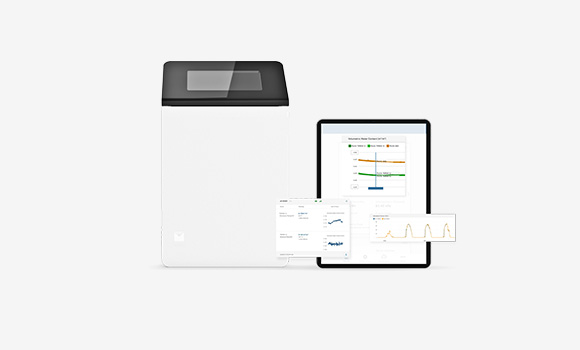Episode 35: The human burden on urban soils
Ecosystem services—the physical processes performed by soils within an ecosystem—are well-known in agricultural settings, but how do we define and measure them in urban settings?
LABROS is an innovative collection of soil science laboratory instruments, each designed to work individually or as part of a larger, automated system. Conduct automated particle size analysis and measure soil moisture release curves, saturated and unsaturated hydraulic conductivity, and thermal conductivity from a single sample.
Measure the movement and distribution of water in the soil to inform water management, predict soil behavior under a variety of moisture conditions, measure groundwater recharge, or optimize agricultural practices for efficient water usage. Field instruments like the SATURO set the standard for simple, accurate, and time-efficient data collection.
Study groundwater recharge, nutrient or contaminant leaching, and the influence of land management practices on water retention and drainage across a larger area with affordable, easy to use instruments.
Plant growth, microbial activity, nutrient availability and transport, soil erosion, soil compaction, soil respiration, water infiltration and drainage are all dependent on soil moisture. Measure the amount of water and its availability with our water content and water potential sensors.
Measuring the microclimate with a weather station provides comprehensive data on local atmospheric conditions that directly affect soil processes. Weather stations collect detailed information on temperature, humidity, rainfall, wind speed, and solar radiation, all of which influence soil moisture levels, evaporation rates, and soil temperature.
Measure gaseous oxygen in the laboratory, soil, or porous media. Soil oxygen is a key driver of many chemical and biological processes. Monitor O₂ levels in compost piles and mine tailings, or the redox potential in soils. Determine respiration rates by measuring O₂ consumption in sealed chambers, or by assessing O₂ gradients in soil or porous media.
Track groundwater recharge, water flows through canals or channels, or solute concentration using all-in-one sensors. Combining these sensors with a remote data logger allows you monitor water quality and levels across a wide area without frequent site visits.

Customize your data collection and logging solution by combining multiple METER sensors with the ZL6 Data Logger and ZENTRA Cloud. ZENTRA stores your data in the cloud, allowing easy access to your data and near-real-time reports from all of your data loggers.
Avoid costly field visits by accessing your data from any web-connected device. Analyze it with ZENTRA Cloud’s built-in visualization tools, and easily share insights without tracking down log files on individual computers.
Streamline your laboratory analyses and reduce human error using the innovative LABROS soil science laboratory collection. Perform automated particle size analysis, generate soil moisture release curves, or measure thermal and hydraulic conductivity with METER laboratory instruments designed to produce accurate analyses in a fraction of the time of other methods.
Even better, LABROS instruments can be combined to perform all of these analyses from a single sample, saving time and reducing measurement errors due to variations in sample characteristics.


– Dr. Jim Ippolito, professor in the School of Environment and Natural Resources | Ohio State University
Ecosystem services—the physical processes performed by soils within an ecosystem—are well-known in agricultural settings, but how do we define and measure them in urban settings?
Researchers investigate whether biodegradable mulches leach fewer contaminants into groundwater and lead to better soil health.
Dr. Cristine Morgan, one of the US’s premier soil scientists and Chief Scientific Officer at the Soil Health Institute shares her views on why soil health is so critical to our society.

Receive the latest content on a regular basis.